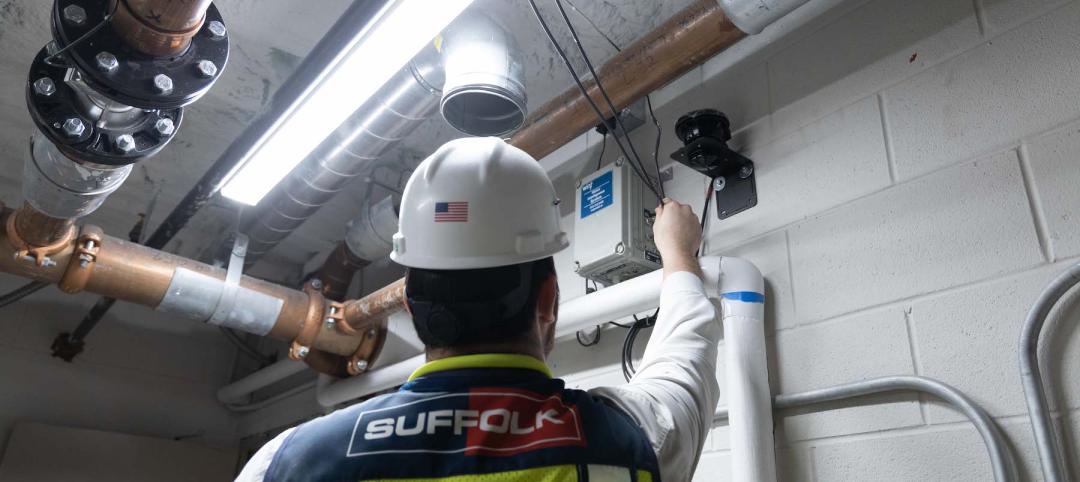The jury for the American Institute of Architects (AIA) Upjohn Research Initiative, a grant program that supports applied research that advances design and professional practice, has announced the five projects selected to receive grants.
The purpose of this grant, now in its 10th year, is to provide base funds for applied research projects that advance professional knowledge and practice. The 18-month long project grant qualifies recipients to have their findings and outcomes published both electronically and in a nationally distributed publication. The total award of $100,000 will be spread across the selected proposals. The jury, comprised of members of the AIA College of Fellows and Board Knowledge Committee, felt the process and deliberations were fully consistent with the double blind-peer review intent of the program. This double blind-peer review helps add an element of rigor to the process whereby proposals are debated on their own merits. The following five submissions were selected for funding:
A Circadian Daylight Metric and Design Assist Tool for Improved Occupant Health and Well-Being
Principal Investigator: Kyle Konis, AIA, Ph.D. (University of Southern California)
All zones within a building that do not regularly achieve the lighting conditions necessary for effective circadian stimulus can be labeled as biologically dark and considered as zones where regular occupancy may be problematic for health and well-being. The objective of this research is to develop a daylighting Metric and Design Assist Tool capable of assessing the circadian potential of architectural space. Procedures using annual, climate-based daylight analysis of eye-level light exposures will be developed to map the circadian effectiveness of a given space. The Design Assist Tool can be used to assess and differentiate the performance of various daylighting strategies during the design phases of a project or to quantify the circadian effectiveness of existing spaces.
Post Natural Material Assemblies
Principal Investigators: Meredith L. Miller (University of Michigan), Thomas Moran (University of Michigan)
Plastiglomerates, formed from the waste polymers of post-consumer plastic fusing with sand, rock, and other inorganic materials, suggest a new approach to sustainable building materials. This proposal builds on collaborative work of the research team to investigate the architectural potential of plastiglomerates with the intent to build a full-scale architectural assembly made from thermocast units. By combining the inherent properties of synthetic plastics and stone, these post natural “masonry” units can be inexpensive, durable, insulating, and locally sourced. The proposed project aims to enhance the plastic-waste-to-building-elem
Smart Cities: Population Health and the Evolution of Housing
Principal Investigator: Joe Colistra, AIA (University of Kansas)
This project will develop a multifamily housing prototype that demonstrates best practices in aging-in-place strategies and tele-health technology. It will investigate prefabricated construction techniques that can be used to bring population health strategies to the affordable housing market. The research team will work with construction industry partners as well as health professionals to test various sensor-enabled assemblies. Some of the more advanced technologies will include motion sensors/fall detection, gait analysis, automated LED smart-spectrum lighting, smart mirrors, smart toilets, sleep sensors, and automated medicine dispensers.
SMART Tiles: Novel Application of Shape Memory Polymers for Adaptive Building Envelopes
Principal Investigator: Dale Clifford (California State Polytechnic University)
Collaborators: Kelle Brooks (California State Polytechnic University), John Brigham, Ph.D. (Durham University), Richard Beblo, Ph.D. (University of Dayton Research Institute)
This project addresses the challenges of designing adaptive façade systems with ‘dynamic’ or ‘smart’ materials. The team will design latitude-specific self-shading building tiles that apply the attributes of a class of polymers with shape memory characteristics. The SMART Tiles are intended to wrinkle and reposition themselves in response to incoming solar radiation to deliver self-shading and energy harvesting performance. Stepping into the emergent field of building self-regulation with programmable matter, this project joins the shift towards a built environment that passively adapts to subtle environmental fluctuations of temperature, light, humidity, and pressure via material properties. Equally important to the team is that the dynamic aspects of the SMART Tiles appeal to the imagination and viscerally (re)connect a building occupant to the environment.
TrashWalls
Principal Investigators: Taiji Miyasaka (Washington State University), Robert Richards (Washington State University), Vikram Yadama (Washington State University)
Collaborators: Rex Hohlbein (Facing Homelessness; Rex Hohlbein Architects), David Drake (Washington State University)
TrashWalls, fabricated using materials harvested from the local solid waste stream, are designed to reduce heat loss from rented apartments, improve the comfort of those spaces during hot or cold weather, and save renters money on their utility bills, while reducing pollution. The purpose of this project is to design, construct, and examine prototypes of interior insulating walls that are attractive, have an R-value of R-10 (US) or greater, cost less than ten cents per square foot, are built from recycled waste materials, are easily manufactured, fire safe, and can accommodate windows. The research team, a collaboration between architecture and engineering, seeks applications of TrashWalls to backyard transitional homes for people who are homeless in Seattle. Testing will occur in a lab setting and at an urban site.
You can see learn more about previous Upjohn Research Initiative projects here.
Related Stories
Mass Timber | May 3, 2023
Gensler-designed mid-rise will be Houston’s first mass timber commercial office building
A Houston project plans to achieve two firsts: the city’s first mass timber commercial office project, and the state of Texas’s first commercial office building targeting net zero energy operational carbon upon completion next year. Framework @ Block 10 is owned and managed by Hicks Ventures, a Houston-based development company.
AEC Tech | May 1, 2023
Utilizing computer vision, AI technology for visual jobsite tasks
Burns & McDonnell breaks down three ways computer vision can effectively assist workers on the job site, from project progress to safety measures.
Design Innovation Report | Apr 27, 2023
BD+C's 2023 Design Innovation Report
Building Design+Construction’s Design Innovation Report presents projects, spaces, and initiatives—and the AEC professionals behind them—that push the boundaries of building design. This year, we feature four novel projects and one building science innovation.
Building Technology | Apr 24, 2023
Let’s chat about AI: How design and construction firms are using ChatGPT
Tech-savvy AEC firms that already use artificial intelligence to enhance their work view the startling evolution of ChatGPT mostly in a positive light as a potential tool for sharing information and training employees and trade partners. However, the efficacy of ChatGPT is likely to rest on the construction industry’s aggregation of quality data that, until recently, has been underwhelming for getting the greatest bang from AI and machine learning.
Design Innovation Report | Apr 19, 2023
HDR uses artificial intelligence tools to help design a vital health clinic in India
Architects from HDR worked pro bono with iKure, a technology-centric healthcare provider, to build a healthcare clinic in rural India.
3D Printing | Apr 11, 2023
University of Michigan’s DART Laboratory unveils Shell Wall—a concrete wall that’s lightweight and freeform 3D printed
The University of Michigan’s DART Laboratory has unveiled a new product called Shell Wall—which the organization describes as the first lightweight, freeform 3D printed and structurally reinforced concrete wall. The innovative product leverages DART Laboratory’s research and development on the use of 3D-printing technology to build structures that require less concrete.
Contractors | Apr 10, 2023
What makes prefabrication work? Factors every construction project should consider
There are many factors requiring careful consideration when determining whether a project is a good fit for prefabrication. JE Dunn’s Brian Burkett breaks down the most important considerations.
Smart Buildings | Apr 7, 2023
Carnegie Mellon University's research on advanced building sensors provokes heated controversy
A research project to test next-generation building sensors at Carnegie Mellon University provoked intense debate over the privacy implications of widespread deployment of the devices in a new 90,000-sf building. The light-switch-size devices, capable of measuring 12 types of data including motion and sound, were mounted in more than 300 locations throughout the building.
Cladding and Facade Systems | Apr 5, 2023
Façade innovation: University of Stuttgart tests a ‘saturated building skin’ for lessening heat islands
HydroSKIN is a façade made with textiles that stores rainwater and uses it later to cool hot building exteriors. The façade innovation consists of an external, multilayered 3D textile that acts as a water collector and evaporator.
Project + Process Innovation | Mar 22, 2023
Onsite prefabrication for healthcare construction: It's more than a process, it's a partnership
Prefabrication can help project teams navigate an uncertain market. GBBN's Mickey LeRoy, AIA, ACHA, LEED AP, explains the difference between onsite and offsite prefabrication methods for healthcare construction projects.
















